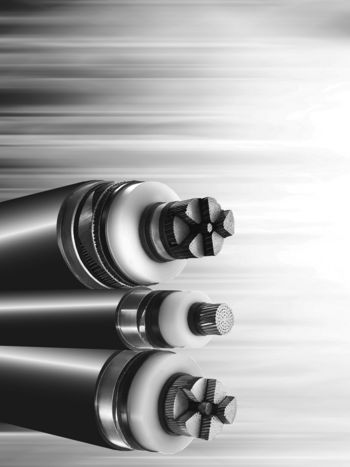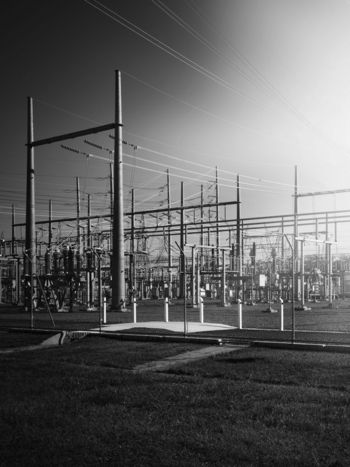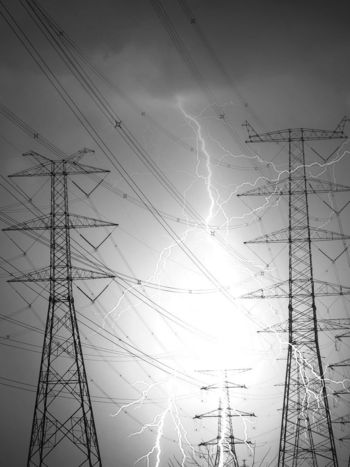High-Frequency Transformer And Reactor Models For Network Studies
Transformers are critical components in any power system. The reliable and safe operation of a transformer requires that the stresses imposed by the environment are kept within acceptable limits. Prediction of dielectric stresses from transient overvoltages requires the ability to simulate the overvoltages in the system, e.g. due to lightning strokes, normal switching operations, fault initiation and clearing, and repetitive voltage flanks from power electronic converters. The stresses involve phase-ground voltages at terminals and inside the transformer, longitudinal stresses at the winding end caused by non-linear voltage distribution along the winding, and resonant voltage buildup inside the winding and between external terminals. Adequate models are also needed in general transient studies, where the transformer is just one of many components. The transformer model should preferably be compatible with Electromagnetic Transient (EMT) programs for its use in general studies, in addition to more specialized in-house simulation programs.
Members
Convenor (NO)
B. GUSTAVSEN
Secretary (BR)
A. ROCHA
A. PORTILLO (UY), A. HOLDYK (NO), A. PALANI (DE), B. VALECILLOS (CH), B. KORDI (CA), B. ANDRIIENKO (UA), C. GONZÁLEZ-GARCÍA (ES), C. ÁLVAREZ-MARIÑO (ES), D. MATVEEV (RU), D. VUJATOVIC (UK), E. RAHIMPOUR (DE), E. MOMBELLO (AR), E. PORTALES (CA), F. PORTILLO (UY), G.A. DÍAZ FLÓREZ (CO), G.H.C. OLIVEIRA (BR), H. DE HERDT (BE), H.K. HØIDALEN (NO), J.H. KIM (KR), J. VEENS (NL), J.C. MENDES (BR), J.F. LOFRANO (BR), J. MONTANHA (BR), L.F. DE OLIVEIRA (BR), M.O. ROUX (CA), M. OSTRENKO (UA), M. RIOUAL (FR), M. FROLOV (RU), O. STERZ (DE), R. CASTRO LOPES (PT), R. DEGENEFF (US), R. RONCHI (MX), R. AZEVEDO (BR), S. JAMIL (UK), T. RÖHRL (DE), T. NGNEGUEU (FR), X. LOPEZ-FERNANDEZ (ES)
Introduction
A previous Joint Working Group (CIGRE JWG A2/C4.39) concluded in its report (TB 577A, TB 577B) that the existing transformer models have substantial limitations.
- Commonly available EMT programs can only represent the transformer by simple models, typically consisting of a standard 50/60 Hz models where saturation effects may be included, sometimes in combination with lumped capacitances.
- Wide-band transformer terminal (black-box) models can be created based on frequency sweep measurements, but the measurement approach and subsequent model extraction method is far from straightforward. Such models have hardly reached practical use outside academia.
- The transformer manufacturers have themselves available detailed winding models for predicting the internal voltage stresses during the lightning impulse test in factory. These simulation programs are in-house and the applied models are in general not available outside the manufacturer. It was found that different manufacturers got very different voltage wave shapes when applying their computational tools to a common (fictitious) geometry description of a transformer.
Study committees A2 (Transformers) and C4 (System Technical Performance) therefore initiated JWG A2/C4.52 to follow up on the work from JWG A2/C4.39. The main scope of the new JWG was to provide adequate transformer models for use in transient overvoltage studies, including modeling specifications and procedures for including models in EMT programs.
The JWG started its work in 2014 with members from transformer manufacturers, universities, research institutes, and consulting companies. The work was organized in five Task Forces that delivered one TB each. The five TBs are:
- Part A – White-box models
- Part B – Black-box models
- Part C – Grey-box models
- Part D – Model specification and interfacing
- Part E – Measurements and design data
In summary, the JWG has 1) described the most relevant models (Parts A-C) along with guidelines on best practices for parameter determination, 2) provided practical guidelines on model specifications and data formats for inclusion of the models in EMT simulation programs (Part D), and 3) performed measurements on two power transformers for model validation purposes (Part E). The measurements results are made freely available along with the transformer detailed design data on an open web site [1] so that anyone can validate his transformer modeling method.
Part A - White-Box Models
Transformer white-box models are normally proprietary models (software) used by the manufacturers to verify the winding’s ability to withstand the standard voltages used in the factory acceptance tests, i.e., the standard lightning impulse voltage (full and chopped waves) and sometimes also switching impulse waves.
These models can be categorized as lumped parameters circuit models based on a spatial discretization of the windings, or distributed parameters models based on traveling wave-type approaches. The model parameters (self and mutual inductances, capacitances, resistances and conductances) are calculated based on a detailed description of the transformer’s geometry and material properties via formulae and/or finite-element method (FEM) computations. The TB describes the principles and procedures for performing such calculations. Analytical calculations are fast and are generally applied by the manufacturers in the day-to-day transformer design tools. FEM can be used to create models that more accurately reflect the internal construction characteristics of the transformer, and it is in general used by the manufacturers as a development tool. Fig. A1 compares measured and simulated voltage transfer from the HV terminal to the LV terminal (X1), for the 1-ph transformer studied by the JWG. The simulation model is a daily use-type model.



